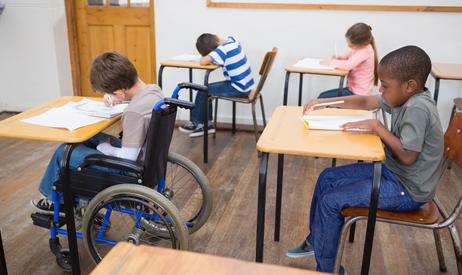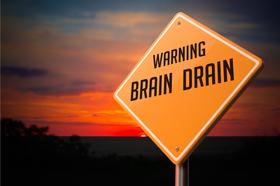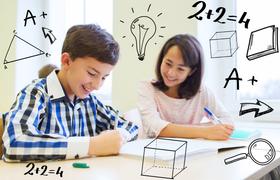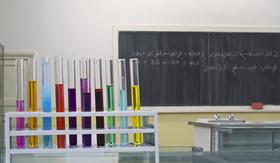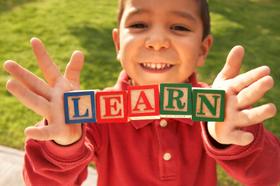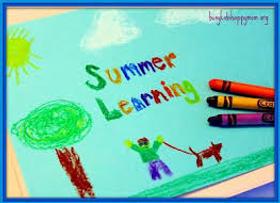Things like ramps and automatic doors are basic services that can be very helpful for physically disabled students in school and the world. But many physically disabled children find that they experience a great many challenges in school – challenges that many schools are simply not equipped to deal with. If you are the parent of a disabled child, take the time to learn about your child’s rights and about the services that exist for children like yours. Once you are equipped with this information, you can take it to the school board and fight for your child’s rights.
This video explains how students with disabilities have the right to accommodations at public schools, colleges, and universities.
Laws Protecting Students with Disabilities
If you have a child with a physical disability, you understand that he experiences challenges each and every day. Many of these challenges are directly related to his disability, but there is also the issue of red tape – students with unique needs often get lost in the confusion when it comes to federal and state legislation. If you want to make sure that your child gets the services he needs to excel in school, you should start by learning about his rights – here is a summary of several important laws that protect students with disabilities:
- The Americans with Disabilities Act (ADA) – This act requires that every educational institution (other than those operated by religious organizations) meet the needs of students with disabilities.
- Section 504 of the Rehabilitation Act (1973) – This is a civil rights statute that helps to protect students with disabilities against discrimination in schools in addition to requiring schools to offer reasonable accommodations for disabled students. According to this act, anyone who experiences some form of impairment that significantly limits one or more major life activities is considered a person with a disability. The accommodations offered by this act may include the following:
- Seating in front of the classroom
- Testing that is not timed
- Homework modifications
- Provision of necessary services
- The Individuals with Disabilities Education Act (IDEA) – This federal law determines which students are eligible for special education services in schools. In order to qualify, the child must have one of the following disabilities:
- Autism
- Learning disability
- Mental retardation
- Other health impairment
- Physical disability
- Serious emotional disturbance
- Traumatic brain injury
- Vision and/or hearing impairment
Knowing the laws that protect your child is important for a parent. If you feel like your child’s needs are not being met, these laws give you the right to request an evaluation for your child to determine his specific needs regarding education. This evaluation might include things like educational testing, a psychological evaluation, a behavioral analysis, an occupational therapy assessment, and a speech and language evaluation.
Does Your Child Need an IEP?
An IEP is an Individual Education Program that is typically developed after a student’s needs are thoroughly evaluated using the process described in the last section. Once your child’s needs have been determined through an evaluation, you will work with your child’s teacher and with the school to develop a specific program to ensure that your child’s educational needs are met. Depending on your child’s disability, an IEP might include several categories of beneficial services, including the following:
- Physical therapy
- Occupational therapy
- Speech and language therapy
- Assigning a classroom aide
Federal law dictates whether or not your child qualifies for special services – you have no control over that. However, you can play an active role in developing your child’s independent education plan. If your child qualifies for an IEP, it is extremely important that you be an active participant in its development – after all, who knows your child better than you do?
This video discusses IEPs in depth.
What Services Are Available for Disabled Students?
Every child is unique, and so are his educational needs. While most children are able to learn and excel in a typical classroom setting, students with disabilities may need a little bit of extra help. Just because a child has a physical or mental disability doesn’t mean that he is stupid or that he is any less deserving of a quality education – it just means that the school may need to make some accommodations to ensure that the child’s individual needs are being met. As you have already learned, students with disabilities are qualified to receive an IEP, which helps to determine which services the child needs. Here is an overview of some of those services and how they can help students with disabilities:
- Physical Therapy – This type of therapy is specifically geared toward improving a person’s gross motor skills – those that involve the larger muscles in the body. Through physical therapy, a disabled student can improve strength, endurance, range of motion, and muscle tone. Physical therapy is often aimed at helping the student move through the school environment, participate in classroom activities, and manage things like stairs, restrooms, and the cafeteria. Physical therapy can also be very helpful in improving mobility for children in wheelchairs.
- Occupational Therapy – This type of therapy is aimed at helping students to engage in regular daily activities for work, school, play, leisure, and social activities. Occupational therapy also helps to teach the student how to engage in self-help activities such as using the restroom, washing hands, tying shoes, and dressing himself. Occupational therapy can also help with fine motor skill activities such as handwriting, typing, or using scissors and silverware.
- Speech/Language Therapy – Students who struggle to communicate as a result of their disability may benefit from speech or language therapy. This type of therapy can help the student with oral motor function to improve his speech ability or it may be focused on finding alternative ways to help the student communicate.
- Classroom Aide – Some students need more one-on-one help than others. In cases like this, the school may provide a classroom aide for the student to help the child complete classwork and participate in classroom activities. A classroom aide's services will be individual to the particular student and his disability.
- Other Accommodations – In addition to actual services, physically disabled students can benefit from other accommodations such as wheelchair ramps and elevators. The school may also make space accommodations, offering handicapped restrooms and classrooms with ample space for a child on crutches or in a wheelchair to maneuver safely. Schools are required to have transportation available for students with physical disabilities, and in cases where the child requires a service dog, additional accommodations may be made for that as well.
This video describes the 14 different categories and classifications of special education students.
As a parent, you always want what is best for your child. Unfortunately, if your child is disabled, you might have to fight harder to defend his rights. Though there are certainly schools out there that work extremely well for students with unique learning needs, many schools are resistant to change and are more worried about maintaining the status quo than ensuring that the needs of individual students are met. If your child has a disability, it is your job to make sure that his teachers and his school know about it, understand it, and are willing to make accommodations for it.
Questions? Contact us on Facebook. @publicschoolreview

